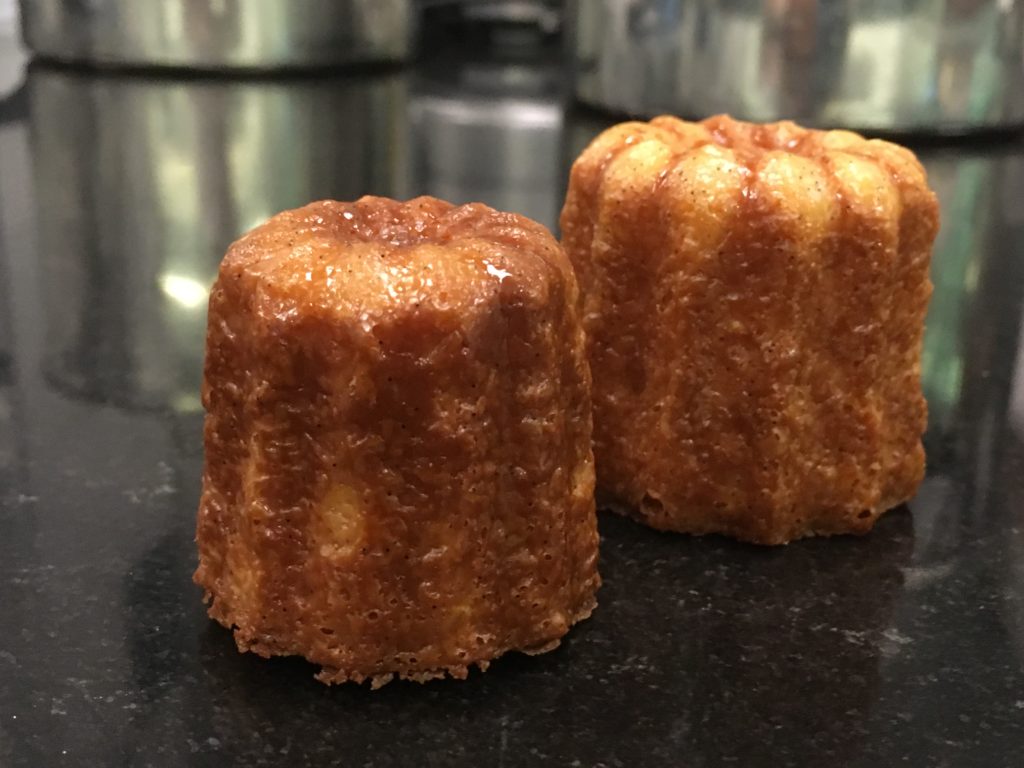
“Ah the canelé, sweet cake with a taste of rum and vanilla with its caramelized crust, it’s a treat! Also called and written fluted, cannelet, canelet, millas-canelet, millason. It is perhaps also the canaule (or canaulé or canaulet) which was consumed in the seventeenth century in Bordeaux. The name comes from the Gascon canelat which means flute.
Of mysterious origin, the legend says that the canelé is an invention of the nuns of the convent of the Annonciades in Sainte-Eulalie in the 18th century. At the time these pastries were called Canelas or canelons. However, the canelas did not look like the famous cannelés today. Indeed, the canelas was a small cake of thin dough and rolled around a stem of cane, fried with lard, so nothing to do with these caramelized treats!
If one thing is certain, it is that the cake we know today is closely linked to the port history of Bordeaux. Indeed, this city is also known to have been an important place for triangular trade and the slave trade. That’s how vanilla and rum came to our Girondins friends.

But the cupcake is not foreign to the famous wines of Bordeaux; indeed an important step in the winemaking, called collage, was to filter the wine in vats with traditionally egg white mounted in snow. This expensive process was still used by many castles and this stage saw all the staff of the castles break eggs and separate the whites from the yellows that were given to the Little Sisters of the Poor who would have made the cake.
Fluted or canelé?
In 1985, some bakers / confectioners from Bordeaux got together and formed the “Confrérie du canelé de Bordeaux” and sliced for “canelé”.
The name “canelé de Bordeaux” has been filed, but it does not benefit from the official name. However, the “fluted” spelling remains the most common because it refers to its unique shape due to fluted copper molds.”
lespetitsgateaux.fr

One thought on “Cannelés Bordelais”
Comments are closed.